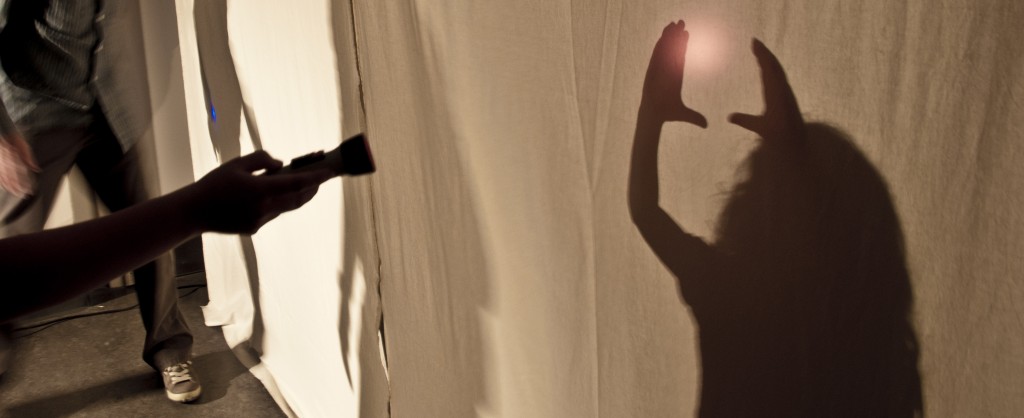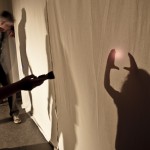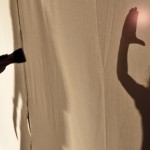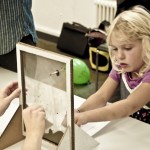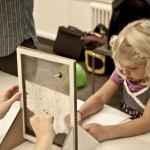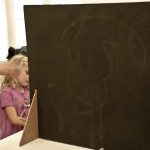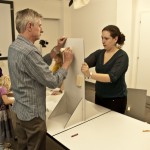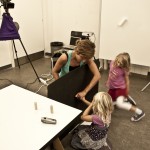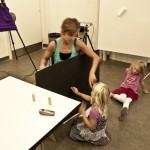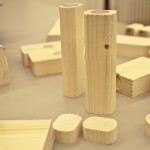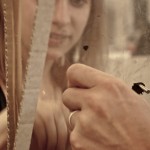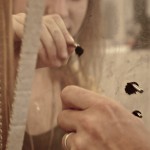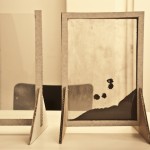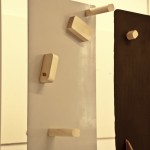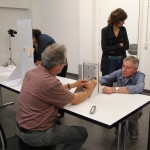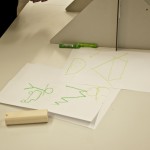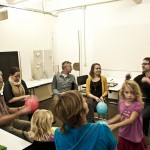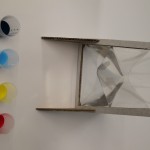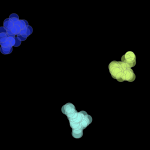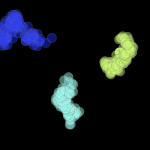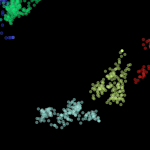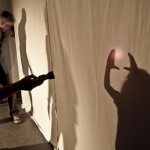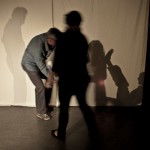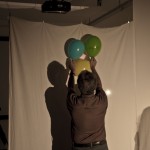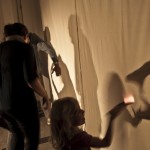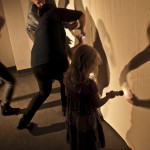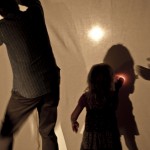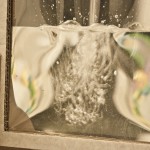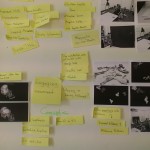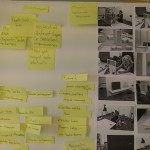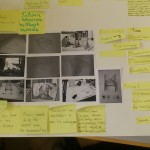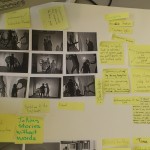Andrés Page
Sensorial metaphors: a participatory design process with the hearing impaired community
This work is focused on the exploration of the boundaries from our senses. Objects and affordances are designed after those needs that are linked to our specific set of skills and sensorial capabilities. In that way most of the behaviours and practices that are transfered into IT Systems and Digital Technologies try to reproduce their analog references. Questioning the barriers between what is logic and not in relation to what we do and what we perceive might help to embody new ways of interacting with the reality that we intend to transform.
Motivation
My motivation for this work in a primitive state was the curiosity after the next question: How could music sound like if the composer had and will never hear a single sound? Analizing this question, braking it and myself into pieces made me realize that the relevance of the question relys on what music means in terms of collaboration, expression, communication and interaction. I depart from the affirmation that music(active side) is a colaborative and direct way of communication and expression in the way that it happens through a reciproque and simultaneous process of playing and listening. This direct and dynamic way of expression, pure by nature, needs no code to deliver its message, contrary to what language does. Languages compress ideas and things into symbols and conventioned codes, they are more focused on thinking and interpreting than in acting, reacting and perceiving, they are translations needed between our minds and the minds from the others, they are static and heavy, everything but emergent.
Focus group
This original question drove my attention to the hearing impaired community. After observing and interacting with them I realized that there is much mistery about the way the communicate, the way they think, the way they perceive, and the way they adapt to a reality that is not designed for them.
Process
Then another important interrogant that emerged, is if this is a work focused on the design of some sort of aid for the hearing impaired community or is it more a study of an existent phenomen where this specific issue -the lack of a sense- is embodied? It became logic to think at the very first point that working on some sort of translation from music or sound into another way that might be comparable is naive and less promissing than searching for metaphors that could open doors to the develpment of new practices. So once more, I focused into sound, what is it? what makes sound so special? its temporal, ephemeral and dynamic nature, its direct relationship with tactile emotions, and its immaterial and magical character,
Methdology
I decided then to develope, design and execute a series of workshops where some interrogants about sonic metaphors are brought into a material reality, where they are tested within real potential users. The workshops ocurr once per month. The information extracted from them it is to be recycled and reworked, in orther to shape an installation which intends to embody the results of this work. The state of this work is such, that the content of this installation is still uncertain.Into the Field
workshop 1.0
The first workshop consisted of three main workstations where different experiments where applied. The participants where: Corinna (Pädagogin, Mutter, Gehörlose), Zoe (6, Hörende), Lila(4, Gehörlose), Tania(Psicologie Studentin, Hörende), Peter Hemmi(Kunstler, Gehörlose), Jürg(Linguist, Hörende)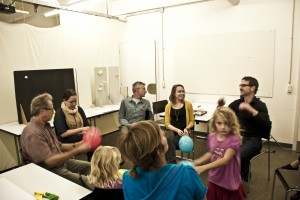 During the workshop the participants and the staff where assisted by two translators sponsored by the Gehörlose Zentrum from Zürich
During the workshop the participants and the staff where assisted by two translators sponsored by the Gehörlose Zentrum from Zürich
Station 1.0
A set of four workingtables where participants had the task to tell each other a story without any kind of language and only using the allowed medium. This activity was much more focused in visual elements. The workingtables where: - Acting - Painting in water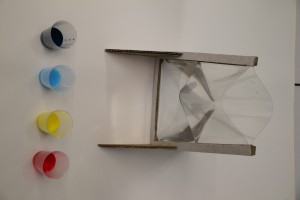
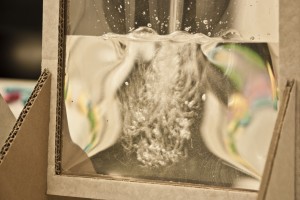 - Building a sculpture
- Making a collage
- Building a sculpture
- Making a collage
Station 2.0
Lights, shillouettes and shadows. Was a set of three activities-games, they took place in a space divided with a curtain, where shadows where projected from both sides, so that the participants could only perceive and interact through the silhouette from the other person. Activity 1. 3D Displays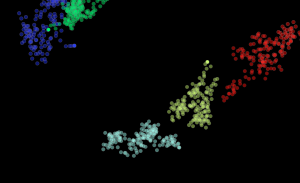
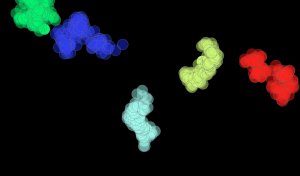 Consisted in the projection of dots that where moving independently. Participants were provided with balloons and they where requested to follow the chosen dot using the balloon as a projection-carrying object. In this activity the room was dark so there were more silhouettes than shadows
Activity 2. Feasible lights
Consisted in two teams, each on each side of the curtain. Teams were provided with a pocket lamp that projected a red or a blue light. There was a light holder per team, who had to prevent to be captured. The others had to catch and build a trap for the contrary light by making a circle(or anything similar) with any gesture of the body, and they could assist each other.
Consisted in the projection of dots that where moving independently. Participants were provided with balloons and they where requested to follow the chosen dot using the balloon as a projection-carrying object. In this activity the room was dark so there were more silhouettes than shadows
Activity 2. Feasible lights
Consisted in two teams, each on each side of the curtain. Teams were provided with a pocket lamp that projected a red or a blue light. There was a light holder per team, who had to prevent to be captured. The others had to catch and build a trap for the contrary light by making a circle(or anything similar) with any gesture of the body, and they could assist each other.
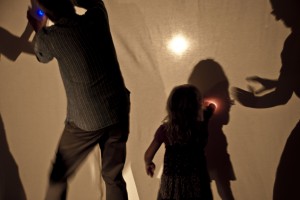
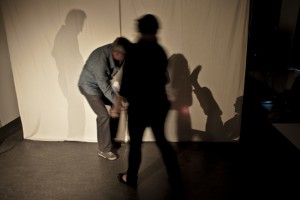 Activity 3. Reactive Waves
Participants where again provided with balloons. This time a deep and low frequency was triggered randomly. They where requested to through the balloon in the air and move to a different position each time they perceived a vibration. They also were asked to catch the balloon again before the movement stopped, and it was possible to exchange balloons with the other participants.
Activity 3. Reactive Waves
Participants where again provided with balloons. This time a deep and low frequency was triggered randomly. They where requested to through the balloon in the air and move to a different position each time they perceived a vibration. They also were asked to catch the balloon again before the movement stopped, and it was possible to exchange balloons with the other participants.
